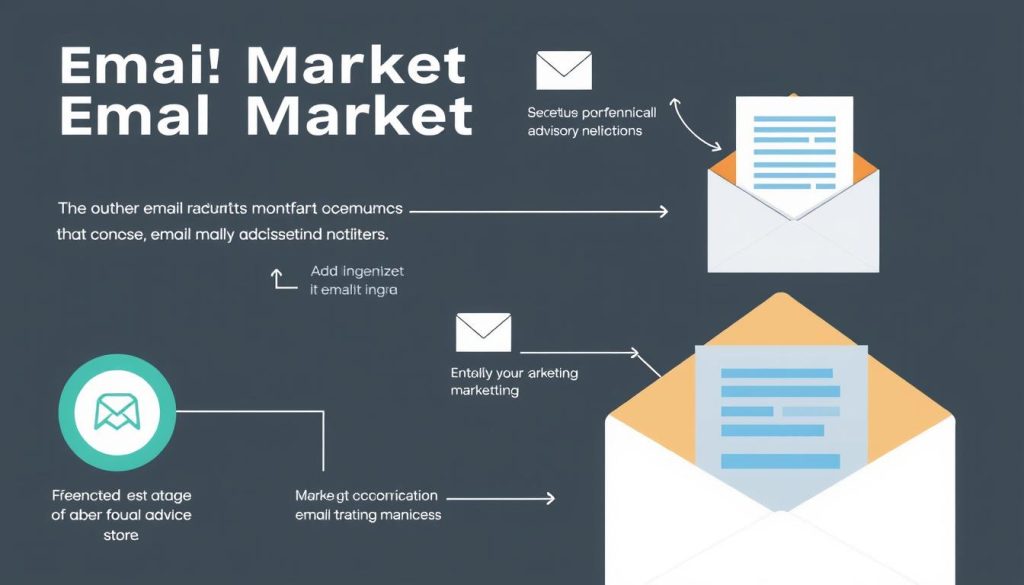In today’s competitive financial landscape, advisors need more than just expertise – they need visibility and a strategic approach to client acquisition. We understand that establishing authority and attracting high-quality leads is crucial for sustainable growth.
By leveraging a well-planned strategy, financial advisors can demonstrate their expertise, build trust, and differentiate themselves from competitors. Our comprehensive guide will explore the power of content marketing in achieving these goals and provide practical approaches to navigate compliance challenges.
Key Takeaways
- Establish authority in the financial industry through effective content marketing
- Navigate compliance challenges and regulatory considerations
- Create sustainable growth by attracting high-quality leads
- Develop a strategic approach to client acquisition
- Transform your practice into a recognized thought leader in your niche
The Value of Content Marketing in the Financial Advisory Space
Content marketing is revolutionizing the way financial advisors connect with their audience, fostering trust and credibility. By creating and sharing valuable, relevant, and consistent content, financial advisors can position themselves as experts in their field, making it more likely for potential clients to engage with them.

The financial advisory relationship is built on trust, and content marketing provides multiple touchpoints to establish credibility before a prospect ever makes contact. When financial advisors consistently deliver valuable insights through their content, they demonstrate both expertise and reliability, two critical factors that prospects consider when choosing an advisor.
Building Trust and Credibility with Potential Clients
Trust is the cornerstone of any successful financial advisory relationship. By leveraging content marketing, financial advisors can create a foundation of trust with potential clients. This is achieved by:
- Demonstrating expertise through well-researched and informative content
- Showcasing a deep understanding of financial concepts and their practical applications
- Providing valuable insights that address common financial concerns and challenges
By doing so, financial advisors can establish a strong reputation and build credibility with their target audience.
Educating and Informing Your Target Audience
Financial concepts can often be complex and intimidating for many individuals. Content marketing serves as a bridge, making these concepts more accessible and understandable. By educating and informing their target audience, financial advisors can:
- Simplify complex financial ideas, making them more relatable
- Position themselves as trusted guides and experts in their field
- Create an immediate connection with prospects by addressing their specific needs and concerns
This approach not only fosters a deeper understanding of financial planning but also helps in establishing a strong, trust-based relationship between the advisor and potential clients.
Why Financial Advisors Need a Content Marketing Strategy
In today’s competitive financial landscape, a well-crafted content marketing strategy is no longer a luxury, but a necessity for financial advisors.
The financial services industry is characterized by intense competition, with many advisors offering similar services. To stand out, financial advisors must differentiate themselves through unique insights and personalized advice.
Standing Out in a Competitive Market
A strategic content approach helps financial advisors carve out a distinct position in the market. Research reveals that 80% of financial advisors operate without a defined marketing strategy, creating a significant opportunity for those who develop and execute a thoughtful plan.
- Develop a unique value proposition through high-quality, relevant content.
- Establish your brand as a trusted authority in the financial advisory space.
- Use content marketing to create a scalable and sustainable business model.

Meeting Clients Where They Are: Online
Today’s clients conduct extensive online research before selecting a financial advisor. Without quality content, you’re invisible during this crucial decision-making phase.
Your digital presence serves as your 24/7 representative, continuously working to attract and educate prospects even when you’re focused on serving existing clients. As
“The goal of marketing is to own a word in the prospect’s mind.” – Al Ries
By leveraging content marketing, financial advisors can meet clients where they are – online – and establish a strong foundation for long-term success.
Content Marketing for Financial Advisor: Key Benefits
Content marketing has become an indispensable strategy for financial advisors aiming to establish thought leadership and attract high-quality leads. By developing high-quality, optimized content that addresses the specific needs and concerns of their audience, financial advisors can target their audience’s particular problems effectively.
We understand that content marketing is not just about producing content; it’s about creating a connection with potential and existing clients. It strengthens relationships between financial advisors and their clients by regularly publishing content that addresses common financial concerns, market trends, and financial tips, thus keeping clients engaged and informed.
Attracting High-Quality Leads
One of the primary benefits of content marketing for financial advisors is its ability to attract high-quality leads. By consistently addressing the specific financial concerns of ideal clients, financial advisors naturally attract more of those exact prospects to their practice. Content marketing generates pre-qualified leads who already understand the advisor’s approach and value proposition, dramatically increasing conversion rates compared to cold prospects.
- Targeted content attracts the right audience.
- Pre-qualified leads have a higher conversion rate.
- Consistency is key to attracting the ideal client base.
Enhancing Client Relationships
Content marketing also plays a crucial role in enhancing client relationships. When financial advisors provide ongoing value through content, it strengthens their existing client relationships, reducing attrition and increasing referrals. Educational content empowers clients to make better financial decisions between meetings, enhancing the overall effectiveness of the advisory relationship.
“The goal of content marketing is to attract and retain a clearly defined audience — and, ultimately, to drive profitable customer action.”
Establishing Thought Leadership
By creating thought leadership content, financial advisors can position themselves as authorities in their field. This not only allows them to command premium fees but also attracts clients specifically seeking their expertise. Thought leadership content is a powerful tool for differentiating a financial advisory practice in a competitive market.
| Benefits | Description | Impact |
|---|---|---|
| Attracting High-Quality Leads | Targeted content attracts the right audience. | Increased conversion rates. |
| Enhancing Client Relationships | Ongoing value through content. | Reduced attrition, increased referrals. |
| Establishing Thought Leadership | Positioning as an authority. | Premium fees, attracted clients seeking expertise. |

Creating an Effective Content Marketing Plan
To succeed in content marketing, financial advisors must first create a comprehensive plan that resonates with their target audience. This involves several key steps that help ensure the strategy is effective and aligned with business objectives.
Identifying Your Target Audience
The first step in creating content marketing strategies for financial advisors is identifying your target audience. Your organization can gather information about your audience through market research and surveys. Once you have identified your target audience, you can create buyer personas representing your ideal customer based on your research.
Effective content marketing begins with precision – identifying exactly who you’re trying to reach allows you to create targeted content that resonates deeply. Developing detailed buyer personas helps you understand the specific financial concerns, goals, and information-seeking behaviors of your ideal clients.
Auditing Existing Content
Before drafting your content marketing strategy for financial services, your organization must conduct a content audit to examine your existing content and content pieces in the pipeline. A comprehensive content audit reveals what’s working, what’s not, and where gaps exist in your current marketing assets.
| Content Type | Performance | Action |
|---|---|---|
| Blog Posts | High Engagement | Continue and Expand |
| Social Media Posts | Moderate Engagement | Optimize and Refine |
| Video Content | Low Engagement | Review and Revise |
Setting Measurable Goals
Setting SMART (Specific, Measurable, Achievable, Relevant, Time-bound) goals transforms vague marketing aspirations into concrete targets you can track and optimize. Your content plan should align with your business objectives – whether that’s increasing AUM, attracting a specific client demographic, or expanding into new service areas.
Establishing clear KPIs (Key Performance Indicators) from the outset ensures you can measure ROI and continuously improve your content strategy. The most successful financial advisors approach content marketing as a systematic process rather than a series of disconnected activities.

By following these steps and creating a well-structured content marketing plan, financial advisors can effectively reach and engage their target audience, ultimately driving business growth and success.
Types of Content That Resonate with Financial Clients
The key to successful content marketing for financial advisors lies in understanding the types of content that resonate with their audience. By creating a diverse range of content, financial advisors can cater to different learning preferences and engage their clients more effectively.
Educational Blog Posts and Articles
Educational blog posts and articles are a great way to establish expertise and address specific financial questions that prospects are actively searching for online. Well-crafted articles simplify complex financial concepts, demonstrating the advisor’s ability to make the complicated accessible. For instance, a blog post on retirement planning strategies can attract potential clients seeking guidance on this critical financial aspect.
Email Newsletters and Drip Campaigns
Email newsletters maintain regular contact with prospects and clients, keeping the practice top-of-mind when financial decisions arise. Strategic drip campaigns nurture leads through the decision-making process, providing relevant information at each stage of consideration. By leveraging email marketing, financial advisors can build a consistent and personalized connection with their audience.
Webinars and Video Content
Webinars combine education with interaction, allowing advisors to showcase their expertise while directly engaging with potential clients. Video content humanizes the practice, letting prospects see and hear the advisor explain concepts, building trust through familiarity. For example, hosting a webinar on investment strategies can help establish the advisor’s authority in the field.
Podcasts and Audio Content
Podcasts offer a convenient way for busy professionals to consume content during commutes or exercise, reaching them when other formats can’t. By creating audio content, financial advisors can expand their reach and cater to different audience preferences.
To illustrate the effectiveness of different content types, consider the following comparison:
| Content Type | Primary Benefit | Target Audience |
|---|---|---|
| Educational Blog Posts | Establishes expertise and addresses specific financial questions | Prospects researching financial topics online |
| Email Newsletters | Maintains regular contact and keeps the practice top-of-mind | Prospects and existing clients |
| Webinars | Combines education with interaction, showcasing expertise | Potential clients seeking interactive engagement |
| Podcasts | Offers convenient consumption of content on-the-go | Busy professionals |
By leveraging a mix of these content types, financial advisors can create a comprehensive content marketing strategy that resonates with their clients and prospects. For more insights on effective content marketing strategies, visit Christoph Olivier Consulting.

Content Distribution Channels for Financial Advisors
To maximize the impact of their content, financial advisors must leverage a variety of distribution channels. Consistency is key in content marketing, and regularly creating and distributing relevant financial content keeps your audience engaged.
An effective distribution strategy ensures that your content reaches your target audience through the channels they use most. This involves understanding your audience and selecting the platforms that best align with their preferences.
Website and Blog Optimization
Your website serves as the hub of your content marketing ecosystem. Optimizing it for both user experience and search engines is fundamental to success. A strategically structured blog with clear categories and thoughtful internal linking maximizes the value of each piece of content you create.
Social Media Platforms for Financial Professionals
Different social media platforms serve distinct purposes in your distribution strategy. For instance, LinkedIn is ideal for professional credibility, Twitter for timely insights, and Facebook for community building. Identifying your target audience will help you choose the most effective platforms.

Email Marketing Strategies
Email remains one of the most effective distribution channels, with an average ROI exceeding 40:1 when properly executed for financial services. Crafting compelling email marketing campaigns can significantly enhance your content’s reach and impact.

Creating a content calendar ensures consistent distribution across all channels, preventing sporadic publishing. Each distribution channel should be evaluated based on where your specific target audience spends their time online. Cross-promotion between channels amplifies your reach and reinforces your message through multiple touchpoints.
SEO Best Practices for Financial Advisor Content
For financial advisors, a well-executed SEO strategy is the key to unlocking online visibility and credibility. A content marketing strategy without SEO is like navigating uncharted territory; you risk being lost and failing to reach your target audience. By incorporating SEO elements, we can ensure that our content not only resonates with our clients but also ranks higher in search engine results.
Effective SEO for financial advisors involves several critical components. First, it’s essential to understand the importance of keyword research in identifying the specific financial questions and concerns our ideal clients are searching for.
Keyword Research for Financial Topics
Keyword research goes beyond mere volume metrics. We need to identify the long-tail keywords that our potential clients use when searching for financial advice. This involves understanding their pain points and the specific information they’re seeking. By doing so, we can create content that directly addresses their needs, thereby increasing its relevance and usefulness.
On-Page SEO Techniques
On-page SEO for financial content requires a delicate balance between technical optimization and readability. This includes optimizing meta tags, headings, and content structure while ensuring that the information is accurate, comprehensive, and compliant with regulatory standards. Proper schema markup for financial professionals can also enhance visibility in specialized search results, making it a valuable on-page SEO technique.
Google’s E-E-A-T Guidelines for Financial Content
Google’s E-E-A-T guidelines (Experience, Expertise, Authoritativeness, and Trustworthiness) are particularly crucial for financial content. To adhere to these guidelines, we must demonstrate our credentials and provide accurate, up-to-date information. This involves showcasing our expertise and experience in financial advisory services, thereby establishing trust with our audience. By prioritizing comprehensive, authoritative content that thoroughly addresses user search intent, we can improve our content’s credibility and ranking.
By implementing these SEO best practices, financial advisors can significantly enhance their online presence, attract high-quality leads, and establish themselves as thought leaders in their field.
Overcoming Common Content Marketing Challenges
As financial advisors navigate the complex world of content marketing, they often encounter challenges that can hinder their progress. While content marketing has many benefits, it’s not without its obstacles. Being aware of these common challenges is the first step to overcoming them.

Time Management for Busy Advisors
One of the biggest challenges financial advisors face is managing their time effectively. Creating high-quality content requires a significant amount of time and effort. According to Semrush, the average time spent writing a long-form blog post is over three hours. To overcome this, advisors can implement systems and templates to reduce the hours required for content creation. Strategic outsourcing of specific content marketing functions can also help advisors maintain quality while focusing on high-value activities.
Compliance and Regulatory Considerations
Financial content marketing is subject to various compliance and regulatory requirements. Advisors must establish clear processes for review and approval before publication to ensure that their content meets these standards. This added layer of complexity necessitates a thorough understanding of the regulatory landscape and a systematic approach to compliance.
Maintaining Consistency in Content Creation
Consistency is key to successful content marketing. Advisors must maintain a consistent publishing schedule and quality to build audience expectations and enhance search engine visibility. Developing a systematic approach to content ideation, based on client questions and concerns, can help overcome writer’s block and ensure consistency. By leveraging these strategies, financial advisors can overcome common content marketing challenges and achieve their marketing goals.
Measuring Content Marketing Success
Effective content marketing measurement is essential for refining our strategy and achieving our business goals. To accurately assess the impact of our content marketing efforts, we need to implement a comprehensive measurement framework.
Key Performance Indicators to Track
To gauge the success of our content marketing, we must track a combination of marketing metrics and business outcomes. Website traffic, click-through rates, and engagement metrics provide insights into how our audience interacts with our content. Additionally, tracking leads generated and assets under management (AUM) acquired helps us understand the direct impact on our business.
- Website analytics reveal which topics resonate most with our audience.
- Email performance metrics offer immediate feedback on our messaging effectiveness.
- Social media engagement metrics identify which content types generate the most interest.
Refining Your Strategy Based on Data
Data-driven refinement of our content strategy is crucial for optimizing our marketing efforts. By analyzing our performance data quarterly, we can identify areas for improvement and adjust our strategy accordingly. Attribution modeling helps us understand which content pieces play the most significant role in converting prospects to clients.
By regularly reviewing our performance data and adjusting our strategy, we can ensure that our content marketing efforts are aligned with our business objectives and are driving meaningful results.
Content Marketing Tools and Resources
Financial advisors can elevate their marketing efforts by utilizing specialized content marketing tools and resources. These tools are designed to streamline content creation, distribution, and analysis, helping advisors to focus on their core competencies while maintaining a robust online presence.
Content Management Systems
Content management systems like WordPress, HubSpot, and Wix offer financial advisors user-friendly platforms to publish and organize content without technical expertise. These platforms enable advisors to manage their content efficiently, ensuring consistency and relevance.
Analytics and Reporting Tools
Analytics platforms ranging from Google Analytics to more specialized tools like SEMrush provide critical insights into content performance and audience behavior. By leveraging these tools, financial advisors can refine their content marketing strategies to better engage their target audience.

Outsourcing Options for Content Creation
If your organization doesn’t have the time and resources to take on in-house content marketing, you can always seek out a content marketing agency for financial services. An agency will help you save time and resources and will also aid your organization in accurately tracking content ROI with relevant marketing metrics.

By leveraging the right mix of content management systems, analytics tools, and outsourcing options, financial advisors can create a comprehensive content marketing strategy that drives results.
Conclusion: Implementing a Sustainable Content Strategy
A successful content marketing strategy is not a one-time achievement but an ongoing process that builds value over time. Effective content marketing begins with precision – identifying exactly who you’re trying to reach allows you to create targeted content that resonates deeply.
By developing detailed buyer personas, you can understand the specific financial concerns, goals, and information-seeking behaviors of your ideal clients. Your content strategy should evolve alongside your practice, adapting to changing client needs, market conditions, and business objectives.
We emphasize that content marketing isn’t a one-time campaign but a fundamental business strategy. The most successful financial advisors view content as an investment rather than an expense. By implementing a sustainable content strategy, you can achieve lasting business growth and establish your authority in the financial advisory space.
To achieve this, start small with consistent execution, and document your strategy to ensure continuity. By doing so, you’ll be able to refine your approach based on data and drive long-term success.
